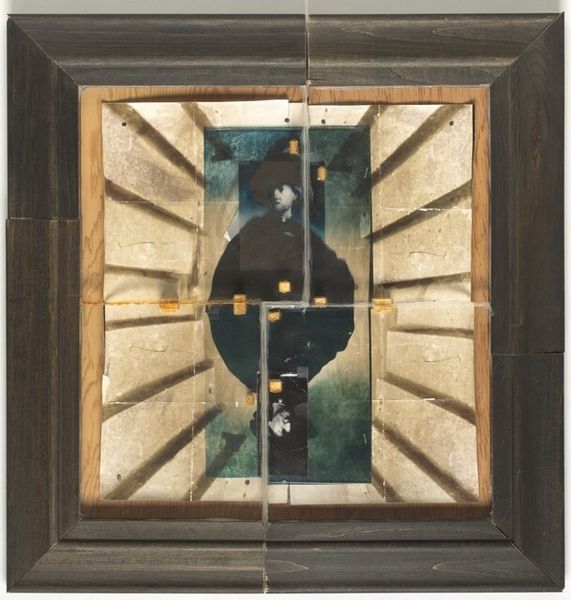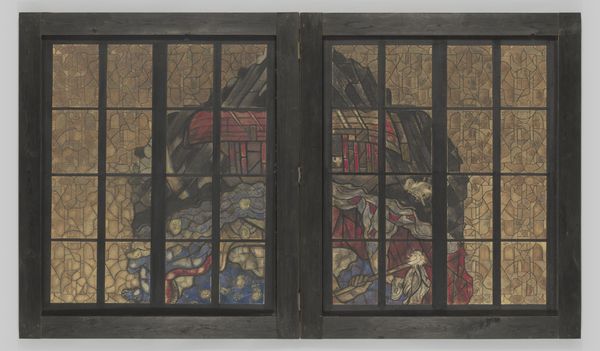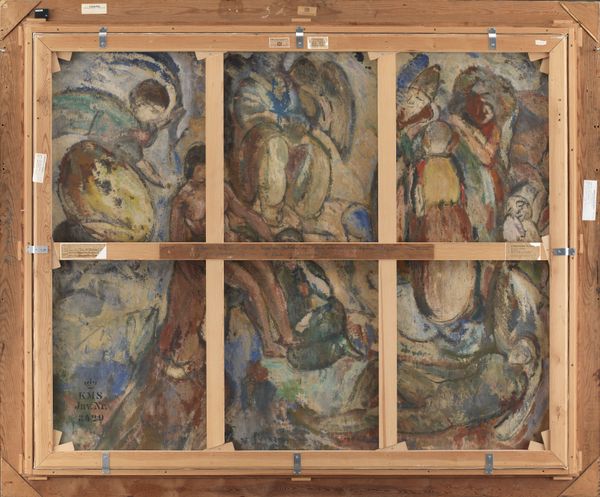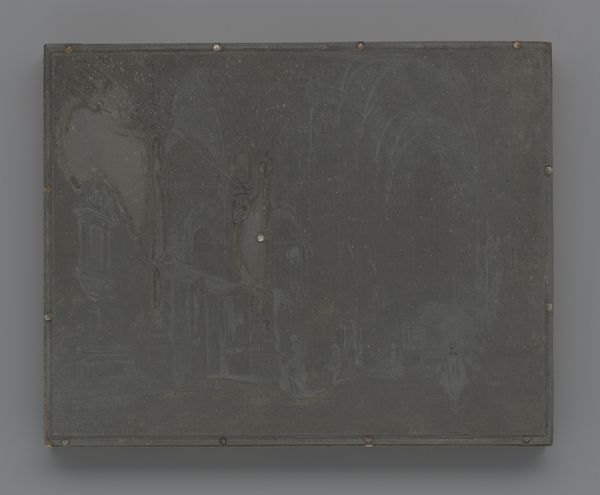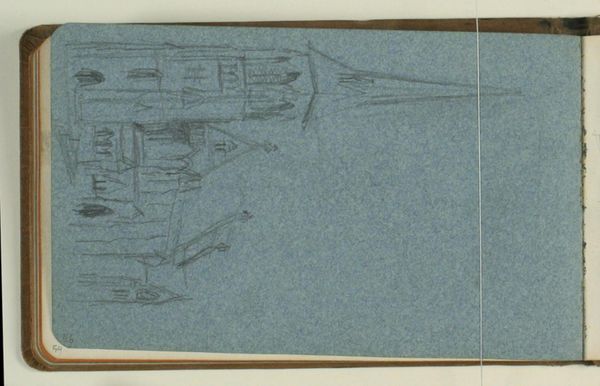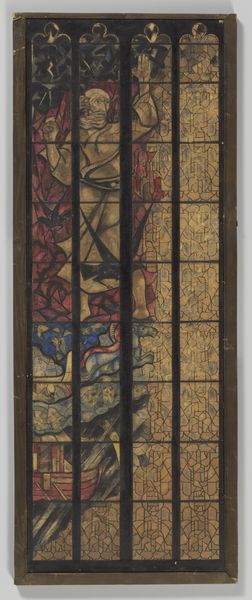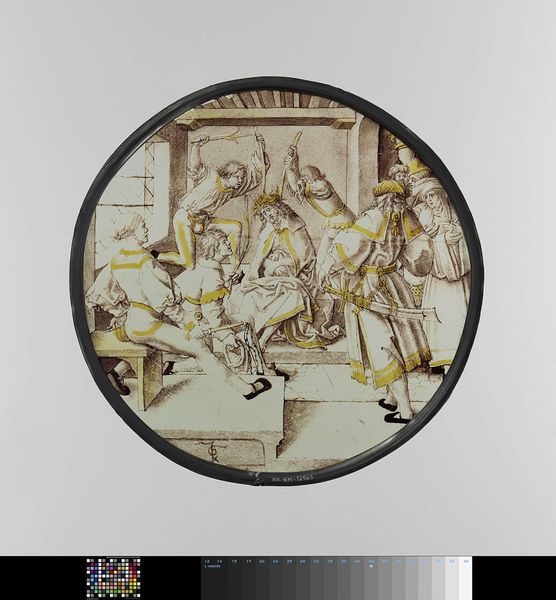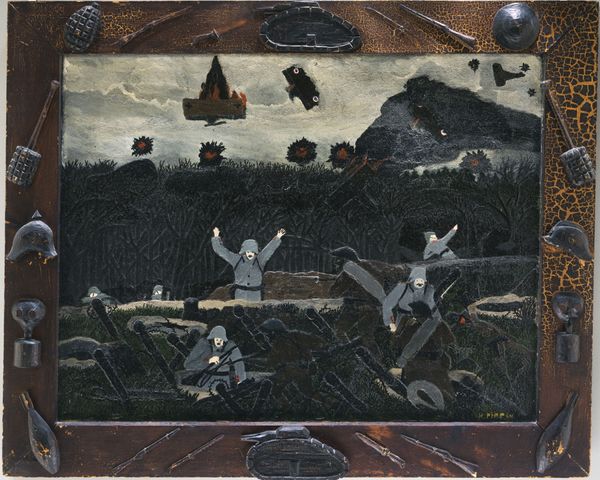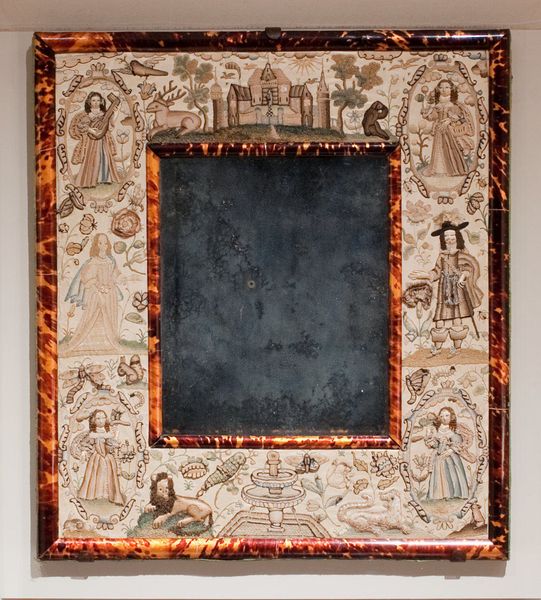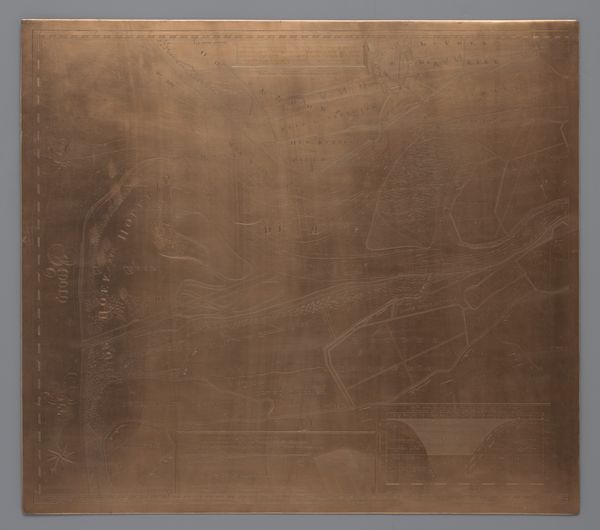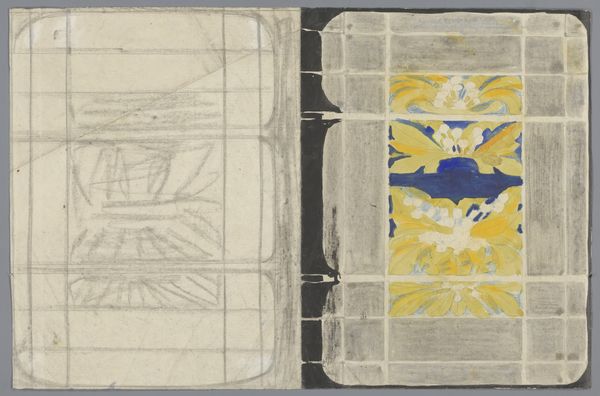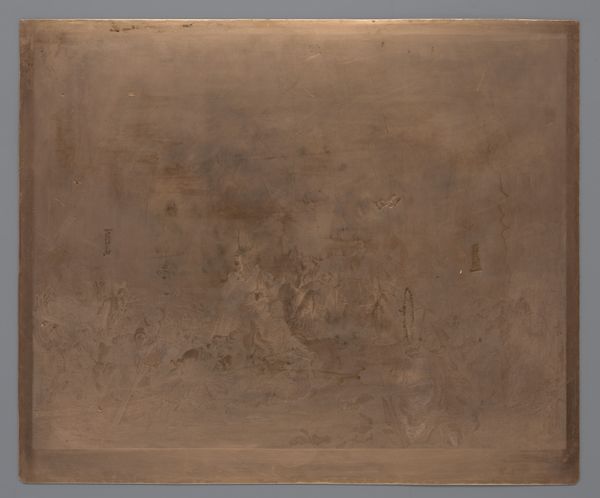
Dimensions: Overall: 36 x 49 1/4 in. (91.4 x 125.1 cm) Each tile: 8 x 8 in. (20.3 x 20.3 cm)
Copyright: Public Domain
Editor: This artwork is "Shepherd and Shepherdess" created in 1878 by Winslow Homer, currently housed at the Metropolitan Museum of Art. The work gives off a pastoral mood but I can't figure out the medium used... What's your take on this artwork? Curator: Indeed. "Shepherd and Shepherdess" captivates with its tranquil scene. What strikes me is how Homer utilizes the classical trope of pastoral life. This invokes idealized visions of simplicity, juxtaposing it perhaps with the emerging industrialism of the time. Editor: How so? Are there specific elements evoking that contrast? Curator: Consider the figures themselves: They’re shepherds, figures associated with Arcadian peace. Note their costumes, suggesting both functionality and a slightly romanticized view of rural attire. Homer may use this visual vocabulary to spark a conversation about authenticity, progress, and the collective yearning for simpler times. Notice how even the medium feels somehow 'ancient'...like fresco, no? Editor: Yes, it does! It makes me think of murals on walls, almost monumental but approachable at the same time. Is there a symbolic message? Curator: The shepherd and shepherdess often stand as symbols of a harmonious, fertile, ordered world, reflecting ideas of leadership, care, and stewardship over both people and land. But, let me ask you this. Look closer at their faces: do you see happiness or something else? Editor: They seem… solemn? Almost melancholy, actually. Maybe there’s an element of longing woven in there, which counters the idyllic scenery. Curator: Exactly. It reminds us that idealized symbols and actual lived experience are not always aligned. The symbol contains within it the seeds of a counter-narrative. The romantic period re-discovered symbols! What’s Neoclassical here meets Romantic yearning for the truth. Editor: That's fascinating! Seeing the push and pull between different meanings definitely changes my perspective on what this piece might be communicating. Thanks! Curator: And thank you for these observations, it made me realize how it relates to a larger conversation regarding cultural memory in American art.
Comments
No comments
Be the first to comment and join the conversation on the ultimate creative platform.

